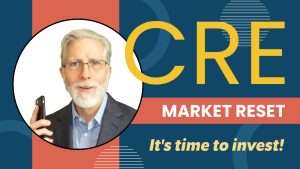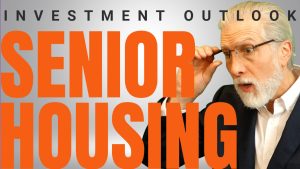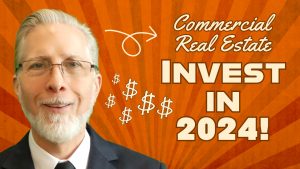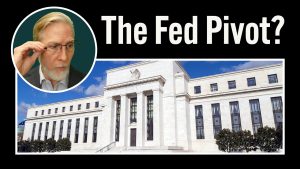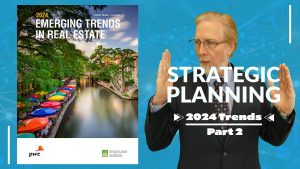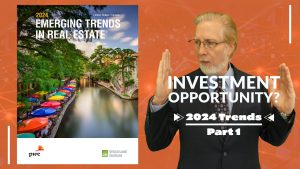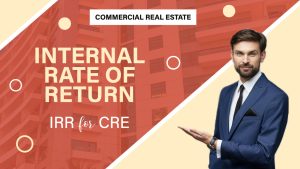Takeaways
- People and companies are flocking to Dallas, driving record-breaking growth.
- Affordable housing and business-friendly policies characterize the metro.
- Conditions are extremely favorable for real estate developers and investors.
According to recently published data from the Census Bureau, over 8.1 million people now reside in the Dallas-Fort Worth-Arlington metropolitan area, or as they say in Dallas, the metroplex. What’s more, the data shows that in 2023, for the second year in a row, the region experienced the largest population growth of any metropolitan area in the country. At this rate, Dallas is projected to replace Chicago as the county’s third most populous metro within the next 10 years. But wait, it gets even better. Hold on to your cowboy hats. Based on current population and migration trends, one extremely future-looking researcher has recently made news by projecting that Dallas will replace New York City as the country’s most populous metro by the end of the century.
Plenty of Room to Grow
Needless to say, most of us aren’t going to be around in 2100 to learn if that prediction comes to pass. The researcher’s point, however, is well taken. Over the past several years, people have been flocking to the Dallas metro like never before. This ongoing trend has catalyzed a boom in real estate development, especially in the surrounding suburban towns and cities. I actually hesitate to call them suburbs, because one of the defining characteristics of DFW is how it’s very polycentric. Dallas is surrounded by a number of fast-growing cities that are increasingly self-sustaining. As more and more employers, ones offering good, high-paying jobs, establish their business operations in Plano, Frisco, McKinney, and other cities within the metroplex, there’s less and less need to commute into Dallas proper for work.
Currently, 24 Fortune 500 corporations are headquartered in the Dallas metro, but only 11 of them are located within the city limits of Dallas. A list compiled by the Dallas Regional Chamber illustrates even more dramatically how the surrounding cities continue to come into their own. Of the 81 notable companies that either relocated to or expanded into the metroplex during the last two calendar years, only five of them are in Dallas proper. This somewhat atypical dynamic has served to create a spirit of healthy competition, with cities very proactively, very strategically engaged in both economic development to attract businesses and urban planning to attract residents. But hold up, I’m getting ahead of myself. Why, exactly, are so many people and companies moving to the Dallas metro? Let’s go back to the beginning.
How Dallas Became the Metroplex
Everything is bigger in Texas, as the adage goes, and that definitely was the case when it came to the vision of city leaders about half a century ago. Following the tumultuous 1960s, including the assassination of President Kennedy in Dallas, decisions were made – no, scratch that – attitudes were embraced that inexorably propelled Dallas to its current status as the fastest growing metro in the country. A concerted effort was made to dramatically modernize the region. In doing that, it led to a style of local governance that’s somewhere between the maverick, wild west spirit of a cowboy and the aspirational, can-do ambition of a visionary. As fate would have it, that attitude turned out to be the perfect means of accomplishing their objective.
The Dallas metro is currently viewed as one of the most business-friendly places in the United States. Cities in the metroplex have a distinctive policy orientation when it comes to business regulations. They very much believe that less is better, and when regulations are necessary, they should be easy to navigate. This simple but powerful perspective makes it a lot easier to get things done in DFW, to not only start a new business but also to grow an existing one. It’s a magnet that’s attracting scores of businesses in diverse industries such as technology, healthcare, energy, and finance, just to name a few. As a matter of fact, in recent years, Dallas has surpassed both Chicago and Los Angeles in number of financial services workers. It’s now second only to New York City, earning it the moniker “Wall Street of the South.”
Oh, by the way, did I mention that Texas doesn’t levy a tax on corporate income? Although that’s a benefit enjoyed across the state, it certainly reinforces the pro-business policies of the Dallas metro.
What's Driving Population Growth?
The incredible growth and diversity of the job market in the Dallas metro means there’s an abundance of opportunities for residents to find fulfilling and well-paying jobs. That’s been one of the main factors driving population growth, but make no mistake about it, the metroplex has a lot going for it. There are many other factors. Right up there at the top of the list is affordability. A high quality of life is relatively more affordable in Dallas than many of the other metros around the country, especially when it comes to housing. Combine that with exceptional school districts, low crime rates, a vibrant arts, culture, and entertainment scene, a thriving food scene, temperate weather, abundant parks and trails, multiple professional sports teams, richly diverse demographics, and people who are friendly and welcoming to newcomers. That’s Dallas.
By the way, just like corporations, individuals don’t pay state income taxes in Texas.
Developers Meet the Challenge
As I mentioned earlier, real estate development has been booming in DFW for some time now. Again, this is very much the result of that distinctive policy orientation I mentioned earlier. Municipalities in the metroplex have decidedly more permissive land use policies than other cities around the country. They want to grow, and boy have they! Within the past 30 or so years, the population of the Dallas metro has more than doubled from under 4 million to over 8 million, thanks in no small part to unprecedented growth of some of the smaller cities within the metro. Frisco, for example, has grown from 6,500 residents in 1990 to over 235,000 today. Phenomenal growth like that cannot happen without a steady supply of new housing, commercial properties, and all the needed public infrastructure to serve city residents.
If you set out to create an ideal situation for real estate developers, it would probably look a lot like the Dallas metro. Not only is demand for new development off the charts, but the cities you’ll be working with to obtain permits and approvals have extremely growth-friendly policies. The rules and procedures they have for developers are streamlined, not overly restrictive, and perhaps more importantly, they’re predictable. In fact, given such favorable attitudes about new development, it’s little wonder that the cost of a single-family home in DFW remains relatively affordable. Lack of supply is a primary driver of the affordable housing crisis in the United States, but guess what, when policies allow for supply to keep up with demand, as they do in the Dallas metro, it quite often will. That’s the lesson that everyone else should be taking from Dallas.
We’re “All In” on Dallas
Our company, Beyond International, an alternative asset manager of private credit funds, learned that lesson years ago. We’re actively working with developers in the Dallas metro to fund their projects, which allows us to provide our investors with attractive and steady, risk-adjusted returns. If you’re a developer or an investor who would like to learn more, please contact us.

